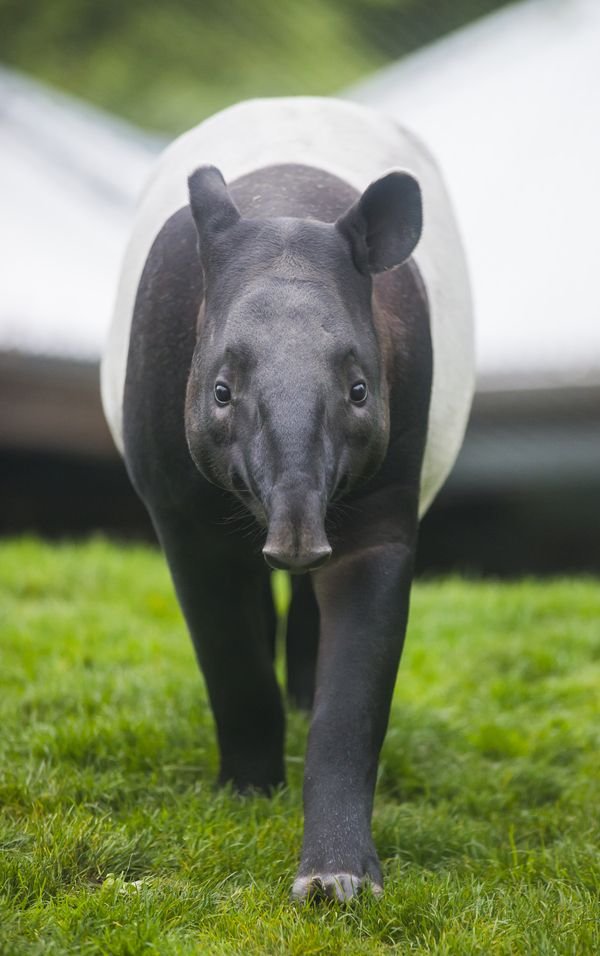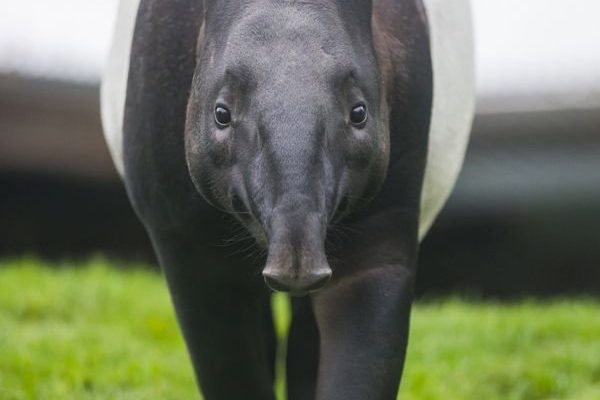
You might be wondering, “Is the tapir endangered?” Understanding their current status is important not just for conservationists, but for anyone who cares about our planet’s wildlife. Just like the fate of the canary in the coal mine signifies potential danger, the status of tapirs can tell us a lot about the health of their ecosystems. So, grab your coffee, and let’s explore the ins and outs of tapir conservation.
What Are Tapirs and Why Are They Important?
Tapirs are large, herbivorous mammals that belong to the family Tapiridae. With four species worldwide—the *Brazilian tapir*, *Malayan tapir*, *Baird’s tapir*, and *Mountain tapir*—these animals play a vital role in their ecosystems. Their unique snouts help them foraging for leaves, fruits, and aquatic plants, effectively acting as gardeners for their habitats. When they eat fruits and leave behind seeds in their droppings, they help with forest regeneration.
Think of tapirs as nature’s little landscaping crew, maintaining the balance of plant life and promoting biodiversity. Without them, some plant species might struggle to propagate, leading to a ripple effect on other species that depend on those plants for food or shelter. So, losing tapirs means we’re also losing the intricate web of life they support.
You might also be surprised to learn that tapirs are closely related to horses and rhinoceroses. They’ve been around for millions of years, which gives them a rich evolutionary history. This makes their current endangered status all the more alarming. If we lose tapirs, we aren’t just erasing one species—we’re wiping away a chapter from the story of life on Earth.
Current Status of Tapirs: Are They Endangered?
When discussing whether tapirs are endangered, it’s essential to look at the conservation status of each species. The International Union for Conservation of Nature (IUCN) has classified these species based on their population trends, threats, and habitats. Currently, three of the four tapir species are at risk of extinction.
1. Brazilian Tapir (*Tapirus terrestris*): Listed as “Near Threatened,” its numbers are declining primarily due to habitat loss from deforestation and agriculture.
2. Malayan Tapir (*Tapirus indicus*): This species is classified as “Endangered.” It faces significant threats from habitat fragmentation and poaching, mainly because of its distinctive appearance and hide.
3. Baird’s Tapir (*Tapirus bairdii*): Considered “Vulnerable,” its population is declining due to similar challenges as the Brazilian tapir, along with illegal hunting.
4. Mountain Tapir (*Tapirus pinchaque*): This species is critically endangered. With fewer than 2,500 individuals estimated in the wild, the Mountain tapir is losing habitat to farming and climate change.
So yes, tapirs are in trouble. Each species faces its unique challenges, but the overarching threat is the same: human activities encroaching on their natural habitats.
Threats Facing Tapirs
Understanding the challenges tapirs face is crucial for their conservation. The primary threats include:
- Deforestation: As forests are cleared for agriculture, logging, and urban development, tapirs lose their homes. They rely on dense, forested areas for shelter, food, and reproduction.
- Poaching: Sadly, tapirs are hunted for their meat, skin, and various cultural practices. This not only reduces their population but also disrupts their social structures.
- Habitat Fragmentation: When roads and settlements cut through forests, tapirs find it hard to move freely. This isolation can lead to inbreeding and a decrease in genetic diversity.
- Climate Change: Changes in rainfall patterns or temperature can severely affect their habitat, impacting food availability and living conditions.
Each of these threats seems daunting, don’t they? But recognizing these issues is the first step toward creating effective conservation strategies.
The Role of Conservation Efforts
Conservation organizations around the world are working tirelessly to protect tapirs and their habitats. These efforts look like this:
1. Protection of Habitats: Many programs focus on establishing protected areas to ensure that tapirs have secure environments where they can thrive. This includes working with local communities to promote sustainable land-use practices.
2. Anti-Poaching Initiatives: Teams are set up in regions where tapirs are vulnerable to poaching. This includes patrolling areas, raising awareness, and enforcing laws to protect these animals.
3. Research and Education: Understanding tapir behavior and ecology is vital. Researchers study their needs and habits, while educational programs raise awareness about their plight and the importance of biodiversity.
4. Community Engagement: Local communities play a crucial role in conservation. By involving them in decision-making processes and providing them with alternative livelihoods, it’s possible to reduce reliance on activities that harm tapirs.
These efforts, while essential, require ongoing support and funding. This support comes not just from governments but from everyone who cares about wildlife.
What Can You Do to Help Tapirs?
You might be wondering how you can contribute to the conservation of tapirs. Every little effort counts! Here are some practical ways to make a difference:
- Spread the Word: Educate friends and family about tapirs. Awareness can inspire others to take action.
- Support Conservation Groups: Donate to or volunteer with organizations dedicated to wildlife conservation. Their work is invaluable.
- Choose Sustainable Products: Opt for sustainably sourced products to help reduce deforestation and habitat destruction.
- Practice Responsible Tourism: If you visit areas where tapirs live, make sure to respect nature and follow guidelines to minimize your impact.
It’s easy to feel overwhelmed by the scale of the problems tapirs face, but remember: collective action is powerful. Each small step we take can lead to significant positive changes.
The Future of Tapirs: Hope on the Horizon?
While the situation is serious, there’s room for hope. Ongoing conservation efforts are proving effective in some regions. For instance, certain protected areas in Brazil and Central America have seen increases in tapir populations, thanks to focused efforts on habitat protection and community involvement.
Science is also evolving. New technology, including camera traps and satellite tracking, helps researchers study tapir movements and behaviors in ways that were not possible before. This means better data and more effective conservation strategies tailored to each species’ needs.
You might not see tapirs in your everyday life, but every action taken to protect them contributes to the overall health of our planet’s ecosystems. Preserving tapirs is more than saving one species; it’s about maintaining the intricate dance of life that connects us all.
In conclusion, the plight of the tapir is a reflection of broader environmental issues. As we learn more about what these animals face and how we can help, we can play our part in the ongoing effort to ensure that future generations can also appreciate the beauty of these fascinating creatures. So, let’s continue the conversation and take action—because every bit helps.

